Life on the edge: what it’s like for communities threatened by coastal erosion
How would you feel if your home was destined to fall off a cliff? Sean T Smith finds this is the reality for one Skipsea community

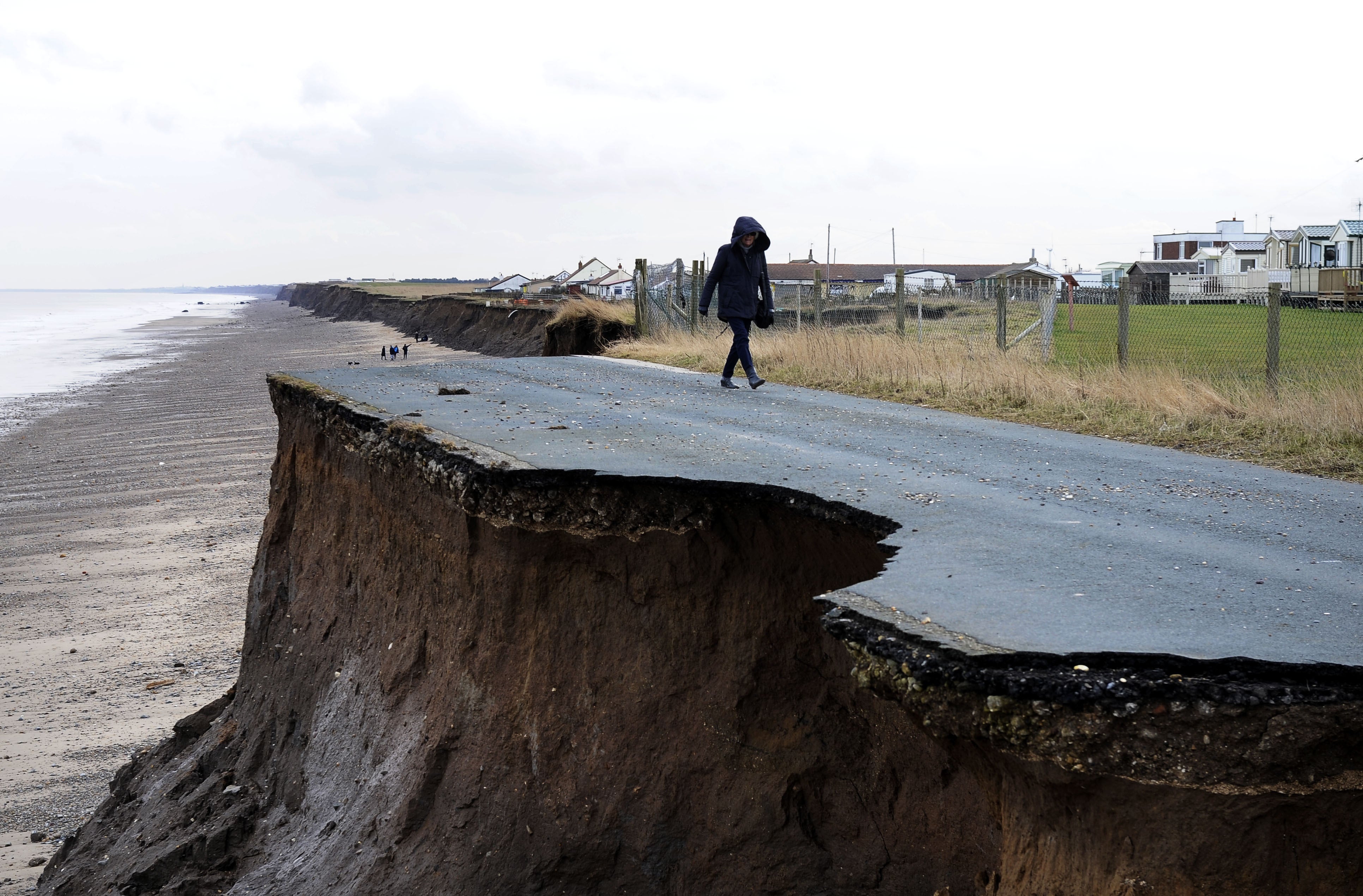
It’s still possible to pick up a bargain property with stunning sea views on the Holderness coast in Yorkshire. Just don’t expect it to be your forever home because one day – quite soon – the cliff top on which it stands will fall into the North Sea.
Bungalows are still changing hands for cash on Green Lane in Skipsea despite aerial surveys charting coastal erosion’s relentless march right up to their front doors.
At the moment, there are no residential homes in imminent danger according to Jane Evison, a ward councillor in East Riding of Yorkshire. But that situation could change suddenly.
“They’re on a knife edge,” she tells me. “I’ve been up there when the tides have been high and the waves are coming up and throwing stones at the houses. I would be terrified, but the people absolutely love living there,” she says.
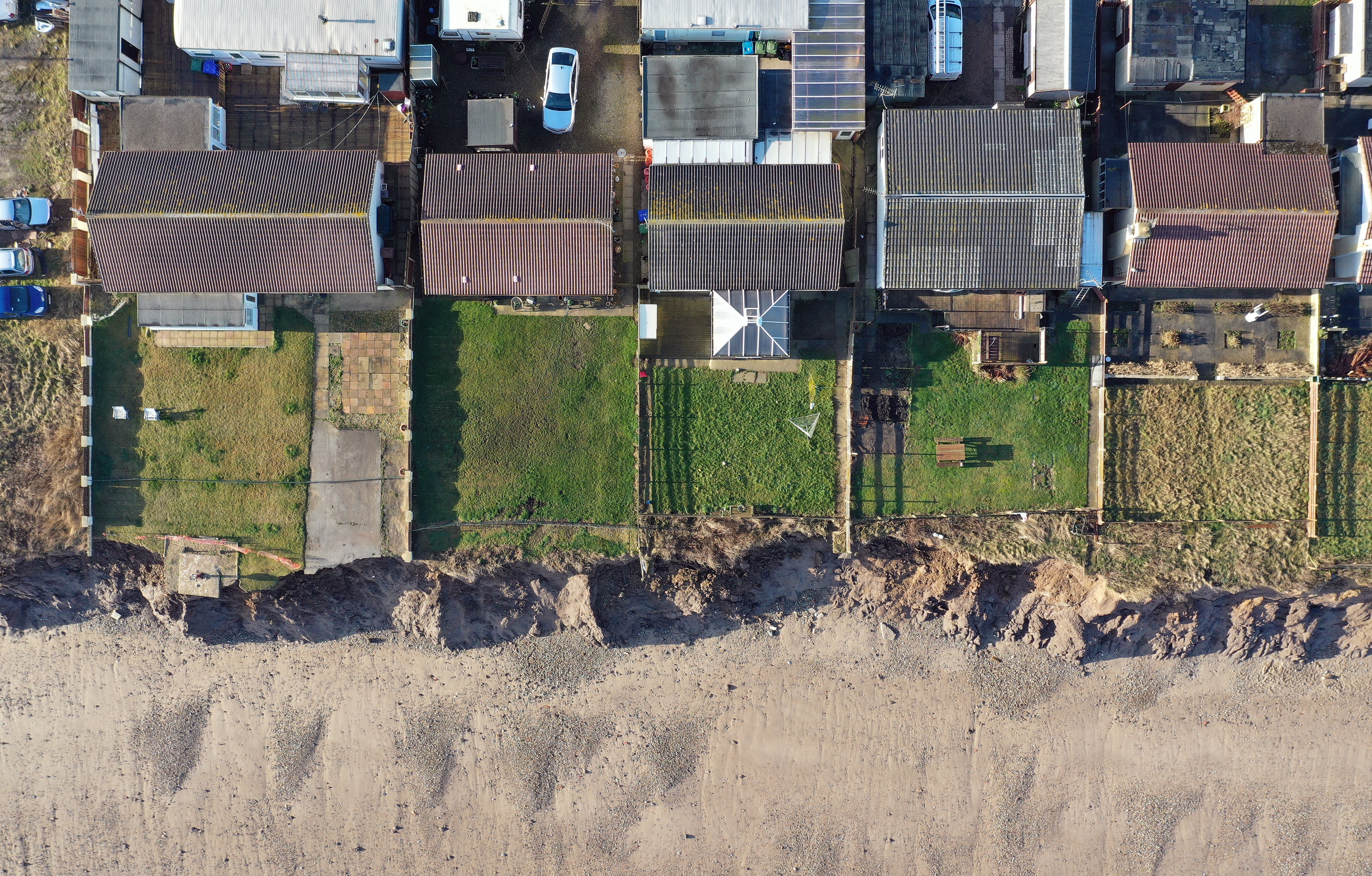
Seven neighbouring properties have been demolished since 2010 for safety reasons and only 15 residential homes remain on Green Lane. Now that the cliff edge has come in dangerously close, a derelict amusement arcade is likely to be the next property to be condemned.
The village of Skipsea itself is tucked away half a mile inland. To reach Skipsea Sands where Green Lane stands you leave the village’s main street and follow Mill Lane down the hill until it’s brought to an abrupt halt by road barriers bearing an ominous warning: “Cliffs subject to coastal erosion – do not proceed.”
These properties can change hands very quickly. People still buy them because they’re so cheap and they’re banking on getting a few good years out of them
The effect is disconcerting and Evison believes its unique location has bred a distinctive Green Lane community.
“They’ve formed their own neighbourhood and are not actually part of Skipsea village community – they’re totally separate and have their own identity. Many of the homes were originally holiday cottages but over the years most have been sold on and added to, and become places where people live permanently.
“These properties can change hands very quickly. People still buy them because they’re so cheap and they’re banking on getting a few good years out of them in the hope that it’s cheaper than paying rent.”
Evison has been working with the community since 2007, when the coastal road was washed away and it became clear that Green Lane was on the front line in the losing battle against coastal erosion.
“At the time the first reaction was wanting to know what we were going to do to stop the erosion. Obviously, it’s been going on for thousands of years so we can’t stop it,” says Evison.
82,000
properties could be at risk from coastal erosion by 2100
As part of the regional shoreline management plan, Skipsea is governed by a “no active intervention” designation, meaning coastal erosion has been allowed to proceed unhindered.
The Holderness coast has one of the fastest eroding coastlines in Europe. The average annual erosion rate remains about 2 metres a year for the whole 52-mile coastline.
Evison explains how, in accordance with the council’s shoreline management plans, major coastal defence schemes have been confined principally to tourist hubs of Bridlington, Hornsea and Withernsea, while much of the rest of the Holderness coastline is left undefended.
Could you stop the erosion? Given unlimited money perhaps you could. But the next question is should you stop it, and that gets emotive
“The government is not about to put defences around the British Isles to defend the countryside. For the rest of the coastline in between it’s about letting nature take its course. That’s a very difficult thing for people to accept,’’ she says.
So much so in fact that when, in the 1990s, John Pethick first advocated a policy of selective coastal defences he received hate mail and unpleasant things through his letter box, according to Mike Elliott, his successor as professor of estuarine and coastal sciences at the University of Hull.
“Could you stop the erosion? Given unlimited money perhaps you could,” Elliott says. “But the next question is should you stop it, and that gets emotive.”
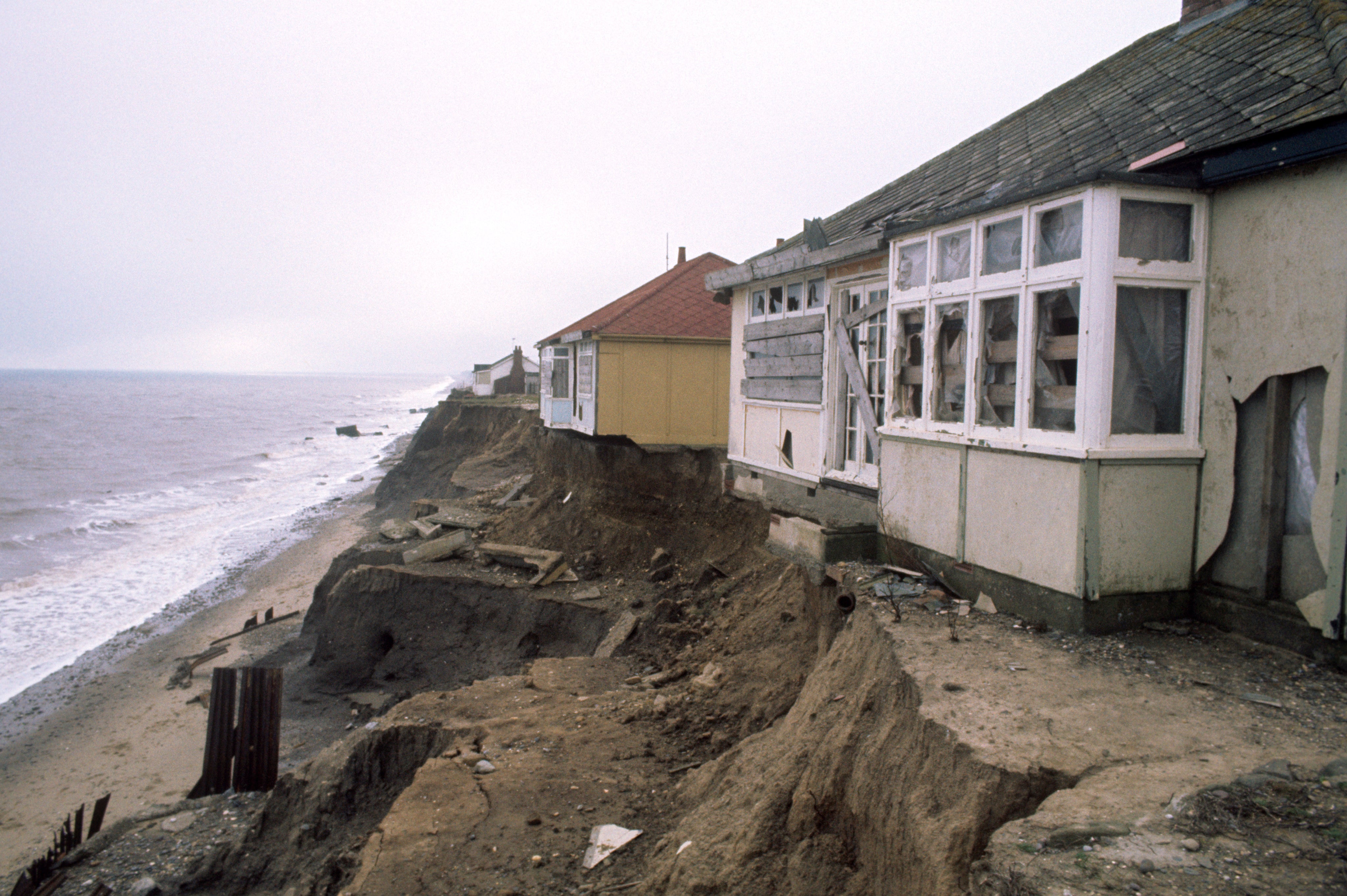
That’s because shoreline management is a zero sum game where some stretches of coastline profit from another’s loss.
Put bluntly, protecting areas like Skipsea would stop the supply of sediment which goes down the coast to give protection against erosion and flooding to the cities and towns within the Humber estuary.
Elliott explains that sometimes leaving areas undefended or the policy of “managed realignment” where previously protected area are allowed to flood are the only viable options.
The government is so worried because not only is it the whole of the east coast but parts of the south coast too
Universal coastal defences are prohibitively expensive because eastern England’s clay and sandstone geology makes it particularly vulnerable down to coastal erosion.
“You have hard rock at Flamborough Head just to the north of Skipsea. But after that the next hard bits you come across are almost the white cliffs of Dover. The government is so worried because not only is it the whole of the east coast but parts of the south coast too,” he says.
It’s thought that there are 1,200 homes currently at direct risk from coastal erosion in areas like Skipsea where there are no structural defences. By the end of the century, 82,000 properties could be at risk from coastal erosion.
That’s why for the people in danger of losing their homes to coastal erosion the “C word” – compensation – has become such a loaded term
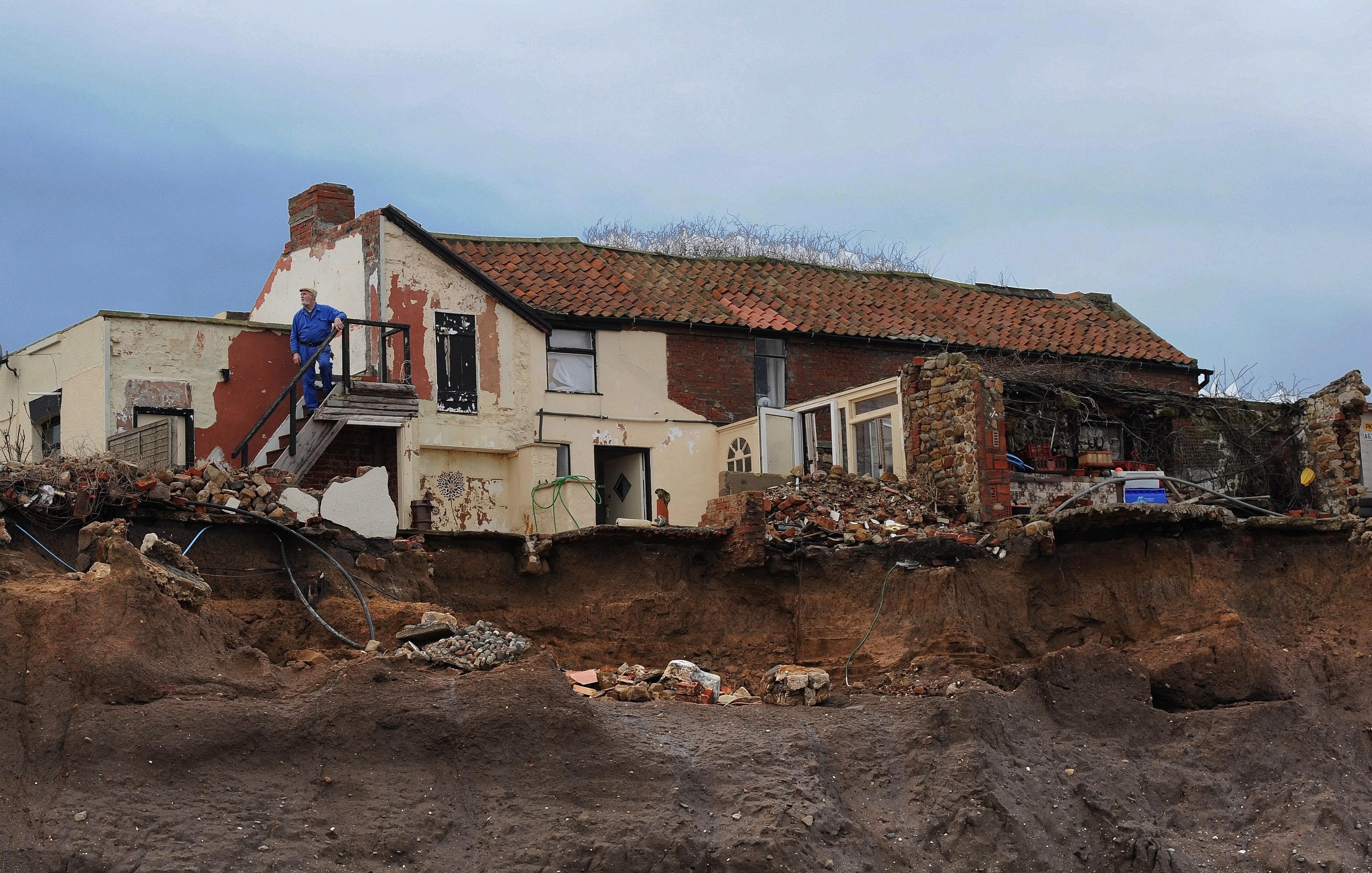
“If you start giving compensation to some because of erosion, what do you do with the people in Suffolk, Norfolk and Lincolnshire and Essex. That’s why local and central government get jittery about this,” Elliot says.
He explains that under English law if your house becomes unsafe, you have to bear the cost of demolishing it, which explains why – to add insult to injury – coastal erosion evictees are sometimes presented with a demolition bill of £6,000.
“So what the councils do is say we can’t give you compensation for the loss of your house. But what we can do is help to rehouse you and give you funding to cover the cost of demolishing your house,’’ he says.
This is the approach outlined by Councillor Evison in East Riding. Green Lane households will have their demolition costs covered if they can establish they’ve been in residence since 2010.
The council regularly carries out aerial surveys: “We advise residents on a regular every three to six months and tell them if we think their property is at risk. That’s always a hard message to deliver but we do try and work with them to help them to think about where they go next,” Evison says.
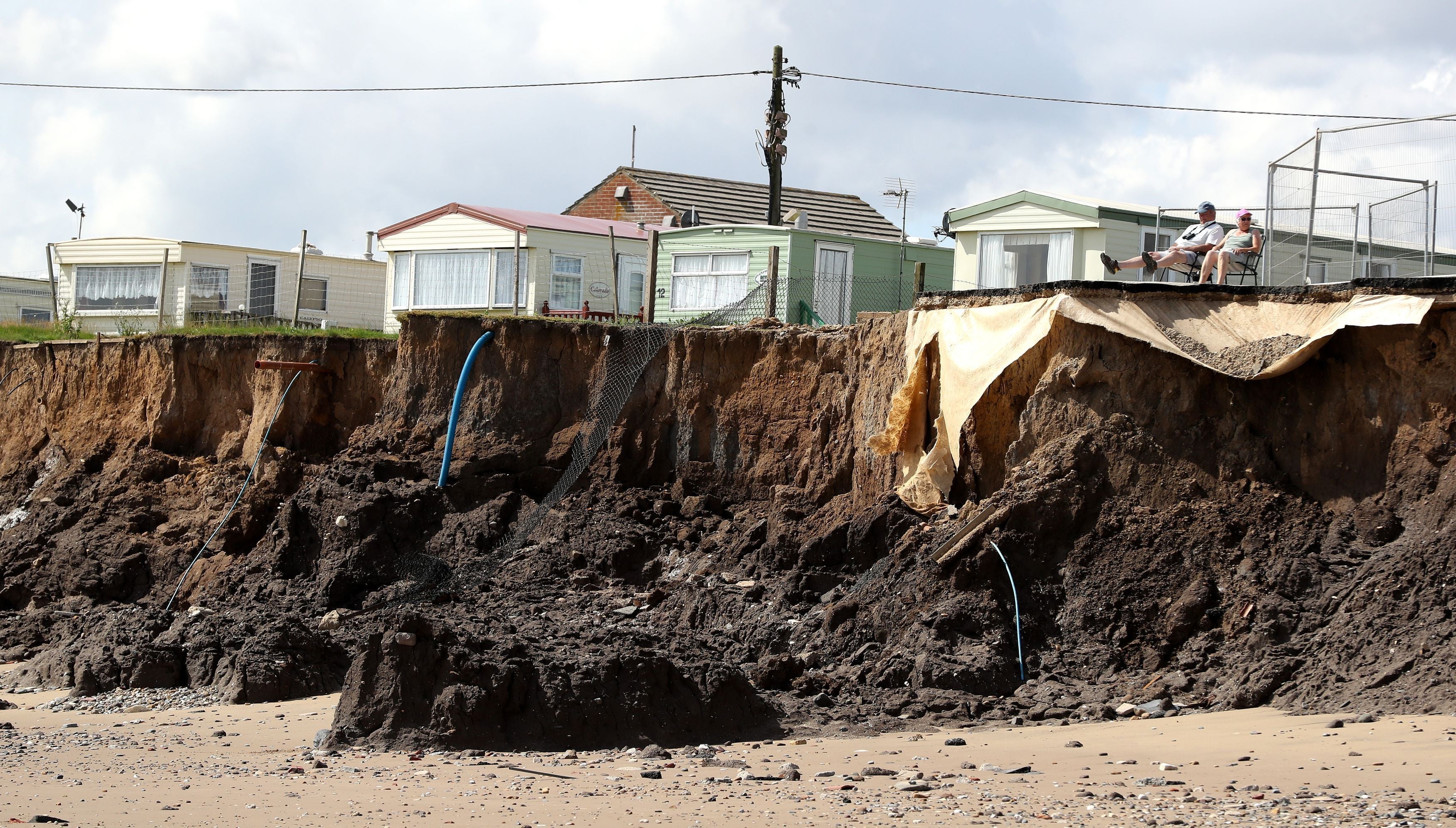
But it’s not just cliffside homeowners who are affected when a coastal community is left undefended.
In a traditional seaside resort dependent on tourism, the effect ripples for miles inland even for business owners whose properties will be safe for hundreds of years.
Further back at family-run campsite Mill Farm Country Park, owner Judy Willmott explains the impact on her business.
“We used to benefit from passing trade and the regular flow of traffic from the road linking us to Ulrome (a nearby village) but since the coastal road was swept away in 2007, it’s a dead end. When guests return having last visited us many years ago they’re shocked to see the changes to the coastline.”
But it’s the loss of a safe public pathway down to the beach that’s her biggest concern because it seems to rob Skipsea of its sense of identity as a traditional seaside resort.
The sea level is rising so that will affect more of the cliff and conditions will become more stormy. The sea cuts into the bottom of rock and the cliff just falls
It’s a concern echoed by Chrysta Newman who rents out dog-friendly holiday homes just outside Skipsea village. If her guests want to get down to the beach it involves a 30-minute additional walk to nearby Barmston.
“There used to be steps that went down to the beach – they were swept away in the big storm surge and have not been put back.”
But according to Evison there are no plans to restore beach access because of the technical difficulty and cost of installing safe, sustainable access.
Newman explains that each spring, local holiday parks try to cut steps into the sand banks to create temporary beach access. But it’s not quite the same and remains difficult for older and less able-bodied holidaymakers.
Although her business and the village of Skipsea are for now safe from the effects of coastal erosion, Newman says there is a general sense that as an undefended area, Skipsea is being left behind its more affluent neighbours like Bridlington.
Between putting in an offer and exchanging contracts for their home 12 years ago, she was shocked to see Skipsea feature in a TV documentary series, Homes From Hell. And when she attempted to sell her property in 2019, she couldn’t find a buyer.
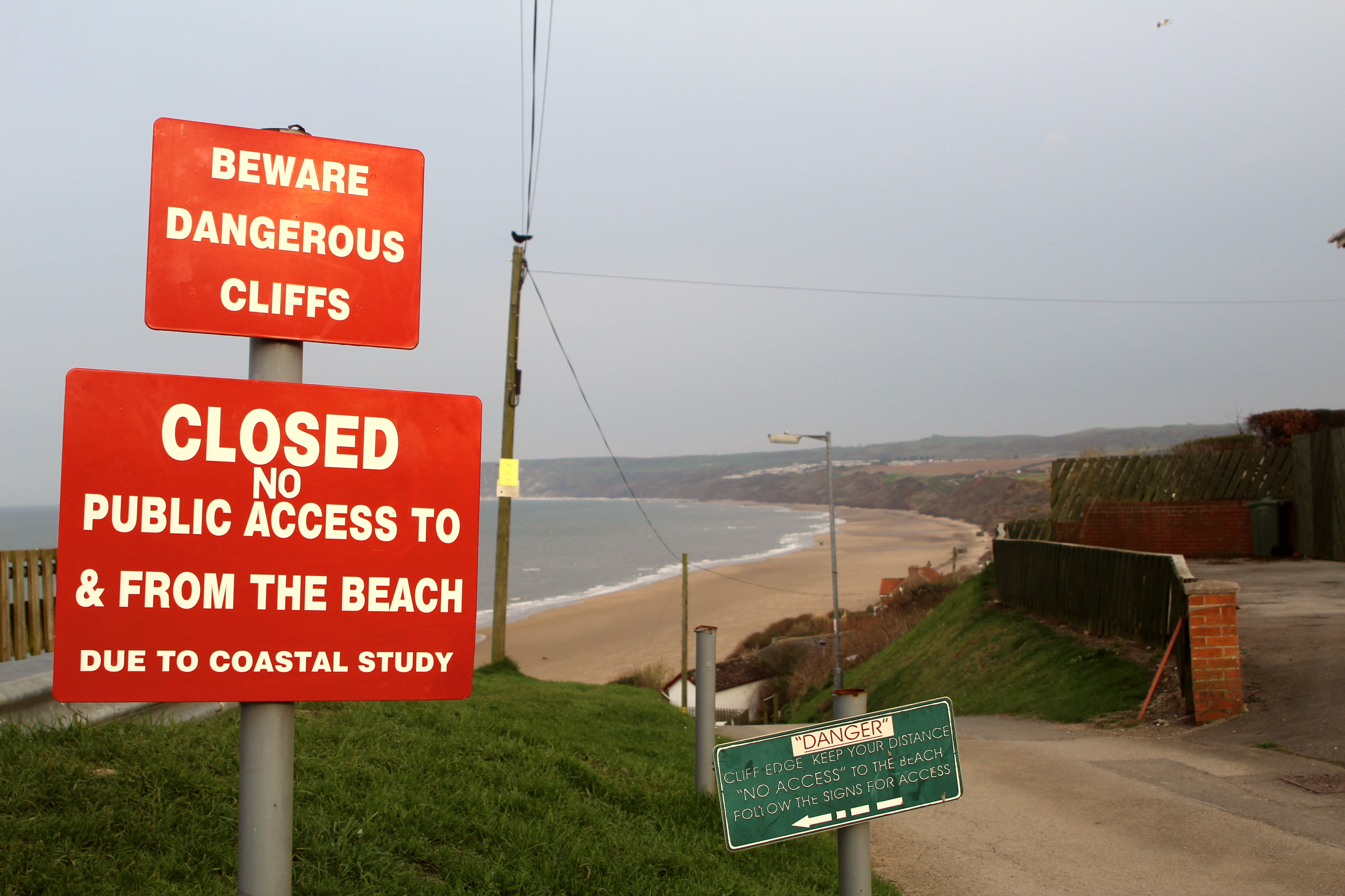
So why is so much of the Holderness coastline left undefended?
When it comes to shoreline management, Elliott explains why it’s necessary to take the long view and see the “bigger picture”, because coastal erosion is an unstoppable process that’s been happening for thousands of years.
By the end of the last ice age, about 10,000 years ago, the area that forms the modern coastline where Skipsea is currently situated would have been securely landlocked.
At that time the actual coast lay some 15-20km east of its current position.
Working in tandem with rainfall, the North Sea has been chipping away at the coastline ever since, gradually gobbling up neolithic and Roman settlements.
In 1912, Tom Sheppard published Lost Towns of the Yorkshire Coast, which named and depicted the sites of 30 villages claimed the sea in the annals of recorded time, but also speculated on the countless settlements lost in the mists of prehistory.
Since the last ice age, “unquestionably whole towns and villages have been washed away,” wrote Sheppard.
Lying just off the coast of Skipsea, the village of Cleeton was one of them. It was mentioned in the Domesday book and a well documented manor there was abandoned in the 16th century. The adjacent hamlets of Hyde and Withow were lost in the early 19th century.
According to Elliott, the East Riding coast will continue to erode at the current rate for the next 5,000 to 10,000 years until the North Sea comes up against the hard rock underpinning the Yorkshire Wolds.
Professor Elliott explains that not only do we have rising sea levels to contend with but to compound the problem the east coast of England is sinking.
As part of unfinished business from the end of the ice age, now that the weight of the ice sheets is no longer pinning northern Britain down, it is slowly rising in a geological phenomenon known as isotatic rebound.
As Scotland rises the unfortunate side effect is tilting the eastern coast of England into the sea.
Many fear that the rate of erosion will accelerate given the effects of global warming and rising sea levels. That’s part of the rationale behind the Coastal Transition Accelerator Programme (CTAP).
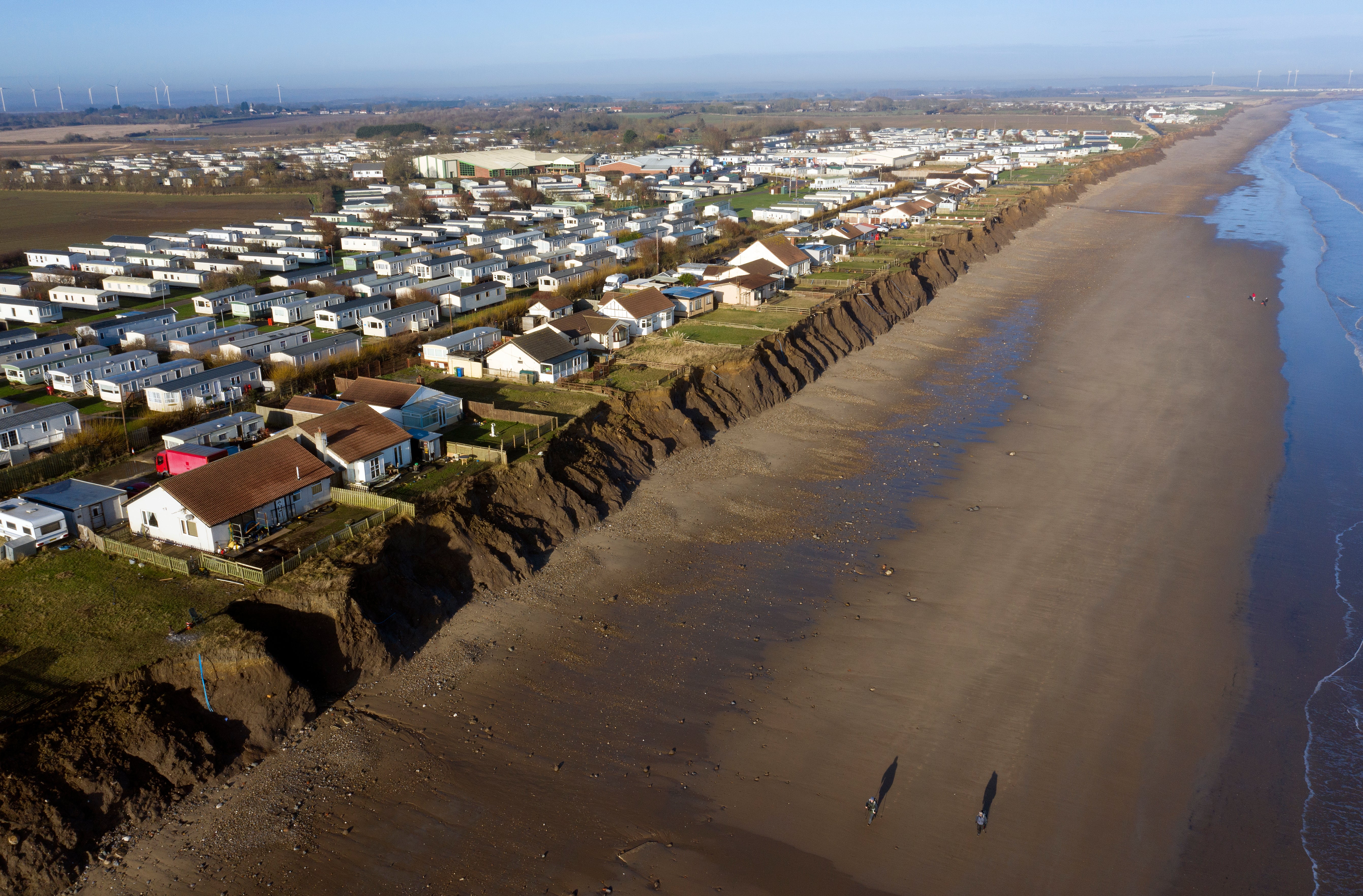
CTAP is designed to help undefended communities in East Riding and North Norfolk adapt to erosion.
The funding comes with a strict criteria. Funding cannot be used for new coastal defences or the maintenance of existing coastal defences. Or anything else that’s already undertaken as part of the council’s coastal management regime, such as demolition of properties at risk.
Despite this, Evison believes that the funding is welcome – but may well suggest that things are expected to get worse sooner rather than later.
“To me it says they’re expecting a lot of climate change and a lot of erosion. That’s why they’re giving a lot of money to help you move facilities away from the cliff,” she says.
But will climate change really have a significant impact on the rate of coastal erosion?
Although man-made climate change is clearly not the cause of coastal erosion, Elliott believes it’s unlikely to help. With more severe storms forecast to occur with ever greater frequency, the Yorkshire coast will continue to be battered by the North Sea.
“The sea level is rising so that will affect more of the cliff and conditions will become more stormy – all of this is likely to add to these problems. The sea cuts into the bottom of rock and the cliff just falls.”
In a couple of weeks’ time we may have some high tides and a lot of rain. Huge chunks of cliff may go that make a difference overnight to whether a property is safe or not
In East Yorkshire, on a coastline made of soft sediment glacial tills left by the last ice age, it’s the prospect of ever wetter winters with heavier rain and surface run-off that worries Elliott more.
“This causes the other sort of erosion – a sort of ‘slumping’ where the cliffs gets wet from the top and weak points in the cliffs are exposed so that the whole system just rolls down towards the sea,” he says.
It’s the difficulties in spotting where those weak spots are that make coastal erosion so unpredictable. Apparently vulnerable stretches of clifftop can survive for decades where elsewhere whole swathes of land thought to be quite safe can suddenly disappear overnight.
This very much chimes with anecdotal accounts from locals I speak to in Skipsea. Judy Willmott, Chrysta Newman and Jane Evison have noticed that in the past, dramatic advances in erosion have been ominously foreshadowed by the kind of wet winter we’re experiencing now.
“There was very little loss last year but in a couple of weeks’ time we may have some high tides and a lot of rain,” Evison says. “Huge chunks of cliff may go that make a difference overnight to whether a property is safe or not.”
Such weather will be concerning for the councillor and residents of Green Lane – but eventually, it seems, there is no escape from the inevitable.






Join our commenting forum
Join thought-provoking conversations, follow other Independent readers and see their replies
0Comments